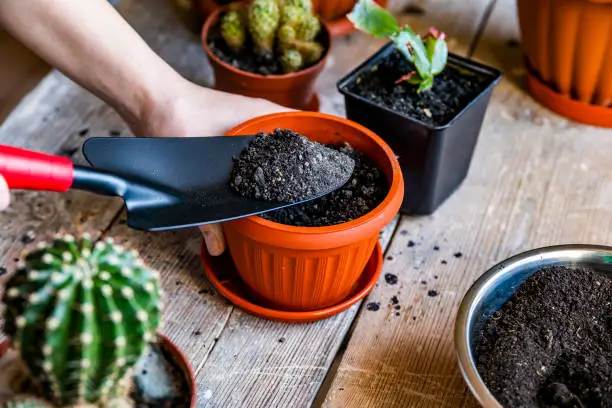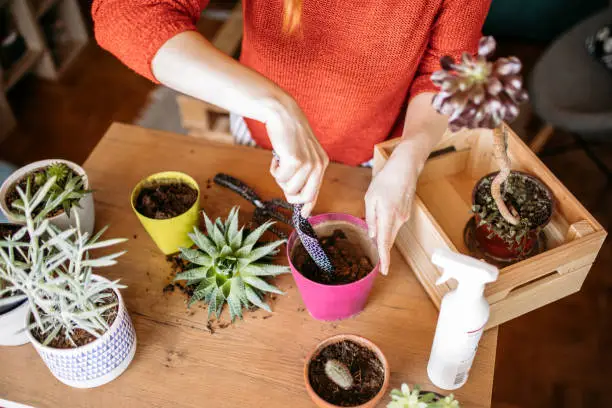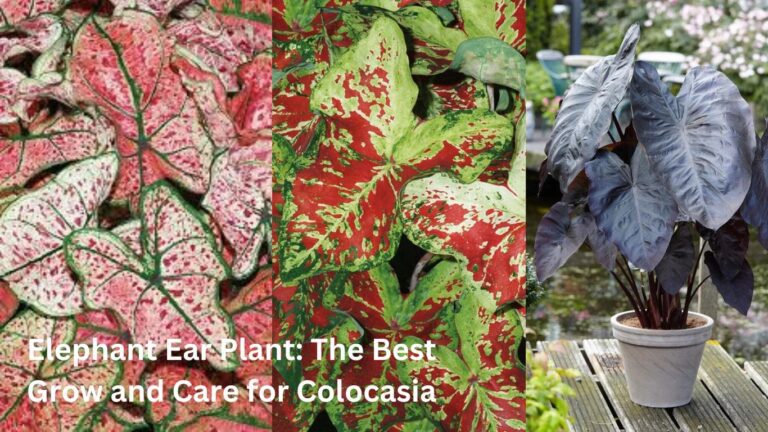Cactus Soil: The Ultimate Guide
Table of Contents
Benefits of Using the Right Soil for Cactus
Using the right soil for your cactus can provide numerous benefits that contribute to the overall health and growth of your plants. The appropriate soil mix ensures proper drainage, preventing waterlogged roots and ultimately reducing the risk of root rot, a common issue among cacti. Moreover, the right soil composition tailored to the specific needs of cacti can enhance nutrient absorption, promoting robust and vibrant growth.
In addition to improved drainage and nutrient uptake, utilizing the correct soil for your cacti can also aid in preventing issues such as compacted soil, which can hinder root development and lead to stunted growth. The right soil mix can create a well-aerated environment for the roots, allowing for optimal oxygen exchange crucial for the overall health and vitality of your cacti. By investing in the appropriate soil for your plants, you are setting them up for success and ensuring they thrive in their environment.

Understanding the Needs of Cactus Plants
Cactus plants have unique needs that must be understood to ensure their health and vitality. These desert-dwelling succulents require well-draining soil to prevent waterlogged conditions, which can lead to root rot and other issues. Additionally, cacti thrive in soil with low organic matter content, mimicking the arid environments they naturally inhabit. By meeting these requirements, gardeners can create an optimal growing environment for their cacti, promoting robust growth and beautiful blooms.
Understanding the distinctive needs of cactus plants also involves recognizing their preference for soil that is slightly acidic to neutral in pH. This specific range supports nutrient uptake and overall plant health. Moreover, cacti benefit from soil mixes that provide adequate aeration, allowing their roots to breathe and preventing soil compaction. By catering to these fundamental requirements, gardeners can cultivate thriving cactus gardens that showcase the beauty and resilience of these unique plants.
Different Types of Cactus Soil Mixes
When it comes to cactus plants, using the right soil mix is crucial for their health and growth. There are several types of cactus soil mixes available, each tailored to meet the specific needs of different cactus species. One popular option is a well-draining mix that combines materials like sand, perlite, and gritty soil to mimic the arid conditions cacti thrive in. This type of soil mix helps prevent overwatering and root rot, which are common issues when cacti are planted in regular potting soil.
Another type of cactus soil mix is a slightly more moisture-retentive blend that includes ingredients like peat moss and coconut coir. This mix is suitable for cacti that require a bit more hydration, such as jungle cacti, while still providing adequate drainage to prevent waterlogged roots. By understanding the different types of cactus soil mixes available and selecting the right one for your specific cactus species, you can create an optimal growing environment that promotes healthy growth and vibrant blooms.

How to Choose the Best Soil for Your Cactus
When it comes to choosing the best soil for your cactus, it’s essential to consider the specific needs of these unique plants. Cacti thrive in well-draining soil that mimics their native desert environments. Look for soil mixes specifically formulated for cacti and succulents, as they contain the right blend of ingredients to support healthy growth and prevent overwatering. Avoid dense, moisture-retentive soils that can lead to root rot in cacti, and opt for porous, sandy mixes that promote air circulation around the roots.
Another important factor to consider when choosing cactus soil is the pH level. Cacti prefer slightly acidic to neutral soil, so make sure the soil mix you select falls within this range. Additionally, consider the presence of perlite or sand in the mix to ensure adequate drainage and prevent waterlogged conditions. By choosing the right soil for your cactus, you can provide a solid foundation for its growth and overall health.
Common Mistakes to Avoid When Choosing Cactus Soil
When it comes to choosing the right soil for your cactus, there are several common mistakes that gardening enthusiasts often make. One common error is selecting a soil mix that retains too much moisture, leading to root rot and other issues for cacti that thrive in well-draining soils. Additionally, using regular potting soil or garden soil for cacti can hinder their growth and cause harm due to the lack of proper aeration and drainage. It’s crucial to avoid these mistakes to ensure the health and vitality of your beloved cacti.
Another mistake to steer clear of is neglecting to consider the pH levels of the soil. Cacti prefer slightly acidic to neutral soil conditions, so using soil that is too alkaline can disrupt their nutrient uptake and overall well-being. Furthermore, overlooking the importance of using a specialized cactus soil mix that is specifically formulated to meet the arid plant’s unique needs can result in stunted growth and poor flowering. By avoiding these common mistakes and opting for the right soil mix, you can provide your cacti with the optimal growing environment they require for thriving health.
Best Practices for Potting Cacti in the Right Soil
When potting cacti, using the right soil is crucial for their overall health and growth. Opt for a well-draining soil mix specifically designed for cacti to prevent waterlogging and root rot. Begin by selecting a container with adequate drainage holes to further assist in maintaining the proper moisture levels for your cactus. Remember to avoid over-watering, as cacti are known for their drought tolerance and can be easily stressed by excess moisture in the soil.
Ensure that the potting soil is dry before repotting your cactus, as working with moist soil can make it more challenging to handle the plant without causing damage. When placing the cactus into the new soil mix, gently pat down the soil around the roots to provide stability for the plant while avoiding compacting the soil too densely. Properly potting your cactus in the right soil mix will set a solid foundation for its growth and well-being in the long run.

Tips for Creating Your Own Cactus Soil Mix
Creating your own cactus soil mix can be a rewarding and cost-effective way to ensure that your beloved succulents thrive in the right conditions. One popular DIY blend includes a combination of sandy soil, perlite, and peat moss to provide the well-draining, nutrient-rich environment that cacti need to flourish. The sandy soil aids in proper drainage, while perlite adds aeration and prevents compaction. Peat moss helps retain moisture without saturating the roots, striking the delicate balance required for cactus cultivation.
Another recipe for a homemade cactus soil mix includes a blend of potting soil, sand, and pumice or gravel for added drainage. This mixture provides a stable foundation for cacti, allowing air to reach the roots and preventing waterlogging, which can lead to root rot. By customizing your cactus soil mix to suit the specific needs of your plants, you can promote healthy growth and vibrant blooms in your desert darlings.
The Role of Drainage in Cactus Soil
Ensuring proper drainage in cactus soil is crucial for the health and longevity of these unique plants. Cacti are adapted to arid environments where water is scarce, making excess moisture their enemy. When cactus soil lacks adequate drainage, water can accumulate around the roots, leading to rot and eventually, plant death. To prevent this, it is essential to use a well-draining soil mix that allows excess water to escape quickly, mimicking the conditions of their native habitats.
The role of drainage in cactus soil goes beyond just preventing overwatering. Proper drainage also promotes air circulation within the soil, helping to prevent root suffocation and the development of harmful pathogens. Cacti thrive in soil that dries out relatively quickly after watering, mimicking the intermittent rains they would experience in their natural desert environments. By ensuring good drainage in your cactus soil mix, you are setting the foundation for healthy root development and overall plant success.

Managing Watering Frequency with the Right Soil Mix
To ensure the health and well-being of your cactus, it’s crucial to understand the role of the right soil mix in managing watering frequency. The composition of the soil directly impacts the cactus’s ability to retain moisture and regulate water intake. By selecting a well-draining soil mix optimized for cacti, you can prevent overwatering and reduce the risk of root rot. Ensuring the soil is airy and provides adequate drainage will help maintain the ideal moisture level for your cactus, promoting healthy growth and longevity.
When it comes to managing watering frequency with the right soil mix, it’s essential to consider the environmental conditions and the specific needs of your cactus species. Different types of cacti have varying water requirements, so it’s important to tailor your watering schedule accordingly. By using a well-balanced soil mix that encourages proper drainage and aeration, you can avoid waterlogged conditions that can harm your cactus. Observing the moisture levels in the soil and adjusting your watering frequency accordingly will help maintain optimal growing conditions for your cactus.
Effects of Using the Wrong Soil for Your Cactus
Using the wrong soil for your cactus can have detrimental effects on its overall health and growth. Cacti are known for their resilience in harsh conditions, but when planted in unsuitable soil, they can struggle to thrive. One common issue that arises from using the wrong soil is poor drainage, leading to root rot and fungal diseases. Additionally, improper soil composition can hinder nutrient uptake, resulting in stunted growth and yellowing of the plant.
Another consequence of using the wrong soil for your cactus is an imbalance in water retention. Cacti are adapted to arid environments with minimal water availability, so when placed in soil that retains moisture excessively, they are at risk of overwatering. This can cause the roots to suffocate and lead to wilting and eventual death of the plant. Selecting the appropriate soil mix for your cactus is crucial in providing the ideal growing conditions for healthy development.
Signs Your Cactus Needs Repotting Due to Soil Issues
When your cactus starts showing signs of distress, it might be time to consider repotting it due to soil issues. One of the telltale signs that your cactus needs a new home is when you observe root crowding at the bottom of the pot. As the roots become tightly packed, they have less room to grow and absorb nutrients, leading to stunted growth and poor overall health for the plant.
Additionally, if you notice that water is draining slowly or pooling on the surface when you water your cactus, this could indicate a problem with the soil. Cacti require well-draining soil to prevent root rot, so if excess water is lingering in the pot, it may be a sign that the current soil mix is not providing adequate drainage for your plant’s needs.

How to Revive a Cactus Damaged by Poor Soil
Reviving a cactus that has been damaged by poor soil requires patience and care. When you notice signs of distress in your cactus such as wilting, yellowing, or stunted growth, it is crucial to act promptly to save your plant. The first step in reviving a cactus affected by poor soil is to remove it from its current pot and gently shake off the old soil from the roots. Inspect the roots for any signs of rot or damage and trim off any unhealthy parts before repotting the cactus in fresh, well-draining soil.
Once you have replanted your cactus in quality soil, give it a thorough watering to help it settle into its new environment. Ensure that the pot has proper drainage to prevent waterlogging, which can further harm the plant. Place the cactus in a location with adequate sunlight and monitor its progress closely. With the right soil and proper care, your cactus has a good chance of recovering and thriving once again.
Enhancing Soil Quality for Optimal Cactus Growth
To enhance the soil quality for optimal cactus growth, it is crucial to understand the specific needs of these plants. Cacti thrive in well-draining soil that mimics their natural arid environments. By incorporating ingredients like coarse sand, perlite, or pumice into your soil mix, you can improve aeration and drainage, preventing root rot and other water-related issues. Additionally, adding organic matter such as coconut coir or compost can help retain moisture while still allowing excess water to escape, creating a balanced environment for your cacti to flourish.
Furthermore, consider adjusting the pH levels of the soil to meet the requirements of cacti, which typically prefer slightly acidic to neutral soils. Testing the pH and making necessary amendments with products like limestone or sulfur can ensure that your cacti have the optimal conditions to absorb nutrients effectively. By tailoring the soil composition to suit the needs of your cacti, you can create an environment that promotes healthy growth, vibrant blooms, and overall thriving plants.
Dealing with Pests and Diseases in Cactus Soil
Pests and diseases in cactus soil can pose a threat to the health and growth of your beloved succulents. One common pest that cacti owners may encounter is the mealybug, a small, soft-bodied insect that feeds on plant sap and can quickly multiply if not addressed promptly. These pests typically appear as white, cotton-like clusters on the surface of the soil or the cactus itself, sucking out vital nutrients and causing damage to the plant.
On the disease front, root rot is a common issue that can arise in cactus soil, especially if the medium retains excess moisture. Root rot is caused by waterlogged soil conditions that lead to the proliferation of harmful fungi, ultimately resulting in the decay of the cactus roots. Symptoms of root rot include wilting, yellowing, or softening of the cactus stem, indicating that the plant is struggling to absorb water and nutrients effectively. Regularly inspecting your cacti for signs of pests and diseases and taking proactive measures to address any issues can help maintain the health and vigor of your plants.
| Signs of Cactus Needing Repotting Due to Soil Issues |
|---|
| 1. Root Bound |
| 2. Slow Growth |
| 3. Soil Compaction |
| 4. Poor Drainage |
| 5. Algae or Fungal Growth on Soil Surface |
| 6. Yellowing or Drooping of Cactus Pads |
| 7. Foul Odor Emanating from Soil |
| 8. Noticeable Depletion of Soil Nutrients |
Recognizing these signs helps ensure the health and vitality of your cactus, prompting timely repotting to address soil-related issues and promote optimal growth conditions.
Maintaining Healthy Soil for Long-Term Cactus Care
To maintain healthy soil for long-term cactus care, it is crucial to understand the specific needs of these unique plants. Cacti thrive in well-draining soil that mimics their natural desert habitat. Regularly monitoring the moisture levels in the soil can prevent issues such as root rot, which can be detrimental to cactus health. Additionally, periodically refreshing the soil by repotting or adding amendments can help provide the necessary nutrients for optimal growth.
Proper soil maintenance for cacti also involves keeping an eye out for signs of compacted or depleted soil, which can hinder root development. Regularly aerating the soil by gently loosening it can promote better water infiltration and root respiration. Moreover, incorporating organic matter like perlite or sand can help improve drainage and prevent soil compaction, ensuring a healthy environment for your cactus to thrive in.
Resources for Finding Quality Cactus Soil Mixes
When it comes to finding quality cactus soil mixes for your beloved succulents, it’s essential to source from reputable suppliers to ensure the health and vitality of your plants. One excellent resource for purchasing high-quality cactus soil mixes is specialized gardening stores that focus on cacti and succulents. These stores typically carry a variety of soil blends specifically formulated to meet the unique needs of cactus plants, offering a selection that caters to different species and growth stages.
Another reliable option for obtaining top-notch cactus soil mixes is to explore online retailers that specialize in gardening supplies. Many reputable online stores provide a wide range of cactus soil options, making it convenient for enthusiasts to access premium blends from the comfort of their homes. These online platforms often offer detailed product descriptions and customer reviews, helping you make an informed decision based on the experiences of other cactus growers. By leveraging these resources, you can confidently choose the best soil mix for your cacti, promoting their overall well-being and thriving growth.
Where can I find quality cactus soil mixes?
You can find quality cactus soil mixes at your local garden center, nursery, or online retailers specializing in succulent and cactus care products.
Can I use regular potting soil for my cactus?
No, regular potting soil is not suitable for cacti as it retains too much moisture. It is important to use a well-draining soil mix specifically designed for cacti.
How often should I repot my cactus to ensure it has the right soil?
Cacti typically need to be repotted every 2-3 years to refresh the soil and provide them with proper nutrients. Keep an eye out for signs that your cactus may be outgrowing its current pot.
Is it possible to create my own cactus soil mix at home?
Yes, you can create your own cactus soil mix by combining ingredients such as potting soil, perlite, sand, and gravel. Be sure to research the specific needs of your cactus species to tailor the mix accordingly.
What are some ways to enhance the quality of soil for optimal cactus growth?
You can enhance the quality of cactus soil by adding organic matter, such as compost or coconut coir, to improve moisture retention and nutrient levels. Additionally, regularly aerating the soil by loosening it can promote healthy root growth.

Beck Wakeford is a dedicated writer at SouthElMonteHydroponics, with a fervent enthusiasm for agriculture and technological innovation. Armed with a degree in Agricultural Engineering from a leading university, Beck specializes in hydroponic systems design, automation, and optimization. Their passion for merging traditional farming with cutting-edge technology drives them to explore novel solutions for sustainable food production. Beck’s expertise and keen interest in the intersection of engineering and agriculture make them a valuable asset in the quest for efficient and eco-friendly farming practices. Through their writing, Beck aims to inspire others to embrace the potential of hydroponics in shaping a more sustainable future.






